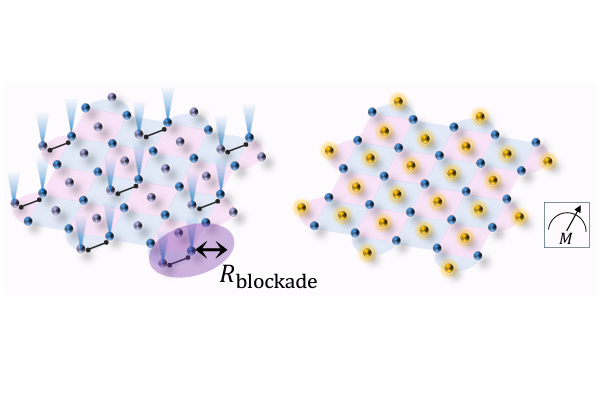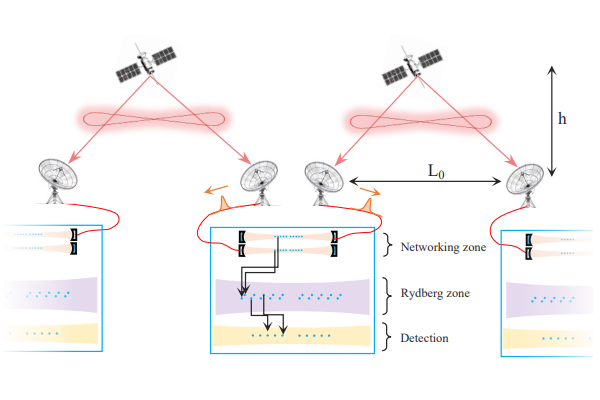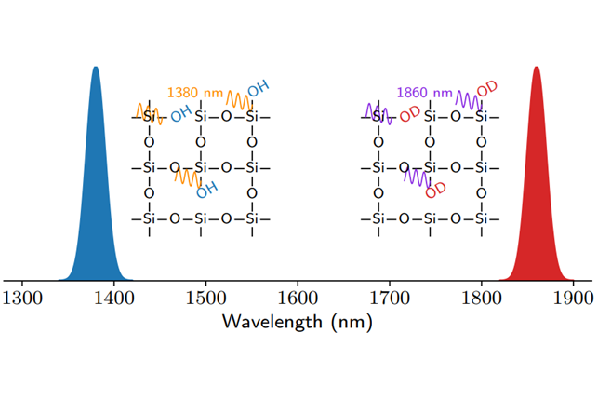Low-Overhead Remote Entanglement Generation: A Cavity-Assisted Gate Approach
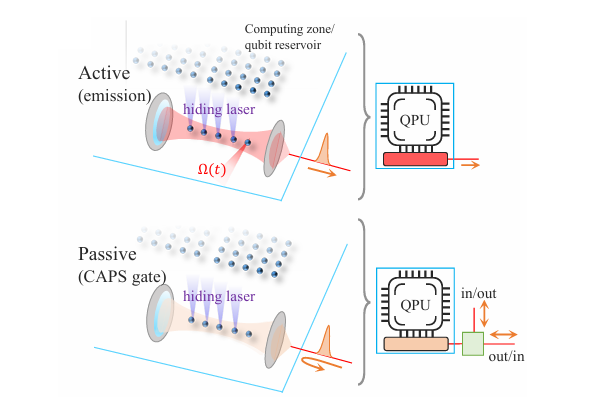
The full paper is available at: https://arxiv.org/abs/2507.01229
Introduction
At NanoQT, we take a consistent and deliberate approach to advancing remote entanglement — a critical enabler for scalable, modular quantum computing and quantum networking. While numerous experimental demonstrations exist, the hardware and operation for remote entanglement generation are still in an emerging phase. One of the central challenges is how to meet practical thresholds for both fidelity and entanglement generation rate using realistic, near-term hardware — particularly in systems like neutral atoms, where QEC-compatible operation demands rates on the order of 1 MHz [1].
In our earlier work [2], we developed a fidelity model capturing the recoil effect and system imperfections in photon-emission-based protocols. In contrast, our latest paper takes a different approach by utilizing cavity-assisted photon scattering (CAPS) protocols, as a passive, high-fidelity, and high-rate alternative with greater potential for practical implementation and scalability.
The result is not just a discovery of a better protocol — it’s a concrete, hardware-informed map of how to reach MHz-class entanglement rates with fidelity exceeding 0.999. This theoretical foundation enables deeper insight into the bottlenecks and tradeoffs and serves as a critical tool for closing the gap between system requirement and engineering reality.
Challenge
A fundamental bottleneck in modular quantum computing and quantum networking is achieving high-rate, high-fidelity entanglement generation, using realistic, near-term hardware. To address this challenge, two distinct classes of protocols have been developed, photon-emission-based protocols (active protocols) and cavity-assisted photon scattering (CAPS) protocols (passive protocols).
A. Photon-Emission-Based Protocols (Active protocol)
Emission-based protocols represents the conventional approach for generating remote entanglement. In these schemes, each atom at an atom-photon interface is first entangled with its emitted photon. These photons then interfere at a beamsplitter, and upon detection, heralded remote atom-atom entanglement is created (Fig. 1A, Type-I). However, this active protocol faces both fundamental and practical limitations:
– A fundamental 50% success probability limit due to the probabilistic nature of photon detection following standard two-photon interference.
– A requirement for precise tuning of atom-photon coupling between the two quantum interfaces.
– Stringent demands on inter-module synchronization.
B. Cavity-Assisted Photon Scattering (CAPS) Protocols (Passive Protocol)
CAPS protocols offer an alternative approach that bypasses the need for two-photon interference. In this scheme, two remote atoms are entangled through sequential interactions with the same single photon from an external source acting as a mediator. Specifically, a cavity-based quantum interface implements a controlled phase-flip (CZ) gate between the atom and the itinerant photon, where the phase shift arises from the photon acquiring a state-dependent phase upon reflection from the cavity–atom system. Sequential application of CZ gates to the two distant atoms, followed by photon detection, heralds remote atom–atom entanglement (Fig. 1B, Type-II). This passive architecture circumvents several key limitations of emission-based protocols:
– Higher success probability, not fundamentally limited by 1/2.
– Robustness against variations in atom-cavity parameters across the network
– No requirement for inter-module synchronization
Despite these advantages, the CAPS approach has not been widely considered for high fidelity, high-speed networking applications, largely due to the prevailing assumption that such performance requires optical cavities with exceptionally high quality.
In this work, we demonstrate that fidelity exceeding 0.999 and entanglement generation rate of well over 100 kHz can be realized in CAPS-based quantum interconnects with existing or near-term cavity parameters.
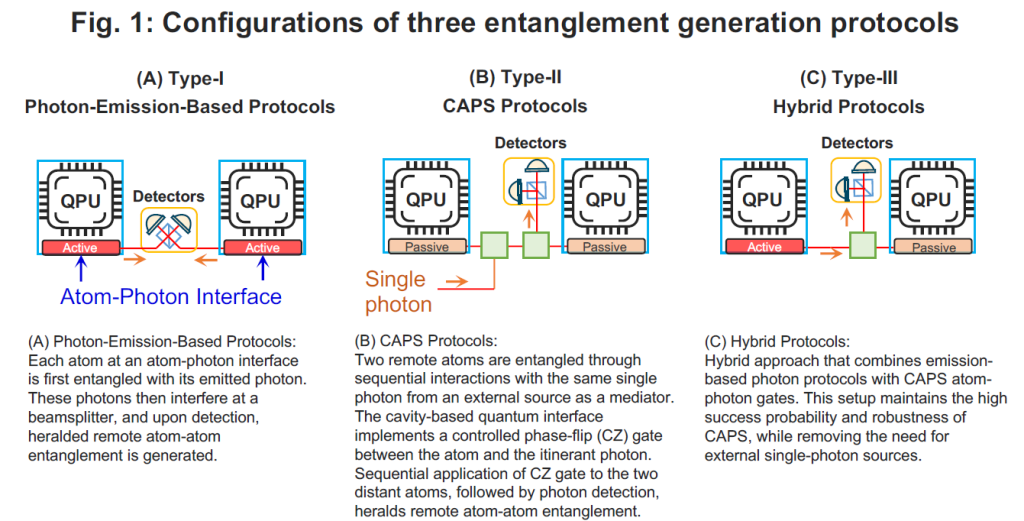
Our solution
To overcome the limitations identified in conventional approaches, we develop a comprehensive theoretical framework that models the key sources of infidelity in CAPS protocols. This framework enables precise identification of optimal protocol and parameter choices that enable high-fidelity heralded atom-photon entanglement using short optical pulses.
To enable high-rate networking via time-multiplexed operation, it is also essential to suppress crosstalk among more than 100 auxiliary atoms within the cavity. We address this by deriving the conditions under which crosstalk can be minimized through induced detuning, leveraging the high atom-number capacity of NanoQT’s nanofiber cavity platform.
Using this framework, we perform end-to-end fidelity evaluations that include realistic imperfections in the photon source (Fig.1B, Type-II). Our results show that both high rate and high fidelity are achievable with near-term experimental parameters.
We also explore a hybrid approach that combines emission-based atom-photon entanglement generation with CAPS atom-photon gates (Fig. 1C, Type-III). This setup maintains the high success probability and robustness of CAPS, while eliminating the need for external single-photon sources.
With all modeling tools in place, Figure 2 compares the time-multiplexed entanglement generation rates of three different protocols – type-I (blue), type-II (orange), and type-III (green) – as a function of cooperativity Cin, which characterizes the figure-of-merit of the atom-cavity system. Across all values of Cin, the entanglement fidelity exceeds 0.999. The results clearly demonstrate that both type-II and type-III protocols, as enhanced by our protocols, outperform the conventional type-I protocols by approximately a factor of two, while simultaneously maintaining high fidelity.
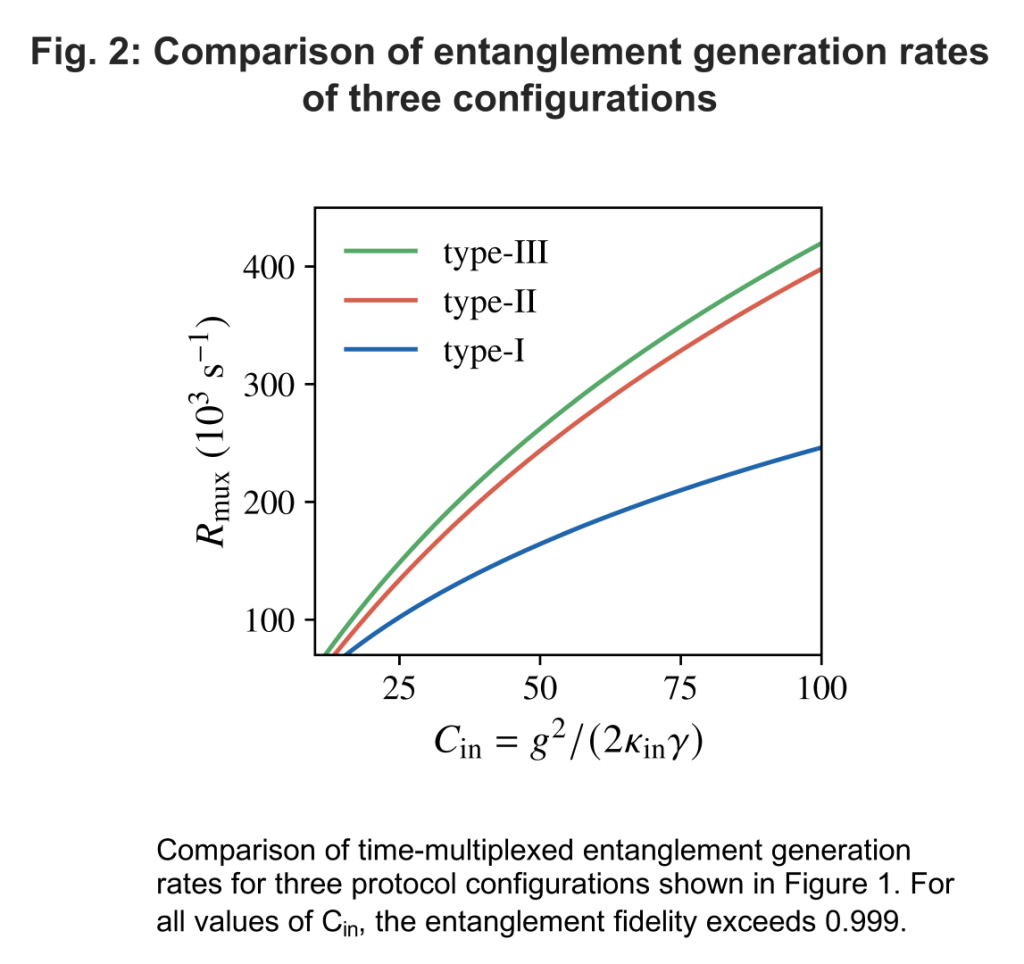
Finally, we propose wavelength-multiplexed operation as a pathway to further scale network performance. By leveraging the multiple resonant modes of optical cavities, this approach enables parallel entanglement generation across multiple frequency channels. Our analysis confirms negligible inter-channel crosstalk and indicates that entanglement generation rates exceeding 1MHz are achievable with a single cavity.
Next step
Our concise and rigorous theoretical model for CAPS-based interconnects enables streamlined optimization of the subsequent operations that utilize the generated entanglement. As an example, we plan to investigate efficient protocols for converting physical remote entanglements into logical ones with sufficiently low error rates, an essential requirement for multi-module FTQC. Building on the rate-fidelity trade-off of physical remote entanglement illustrated in this work, we aim to elucidate optimal strategies for implement logical remote entanglement generation. This theoretical framework provides a foundation for co-optimizing protocol design, hardware configuration, and operating conditions — advancing the development of interconnects that are compatible with neutral-atom base FTQC architecture.
Reference:
